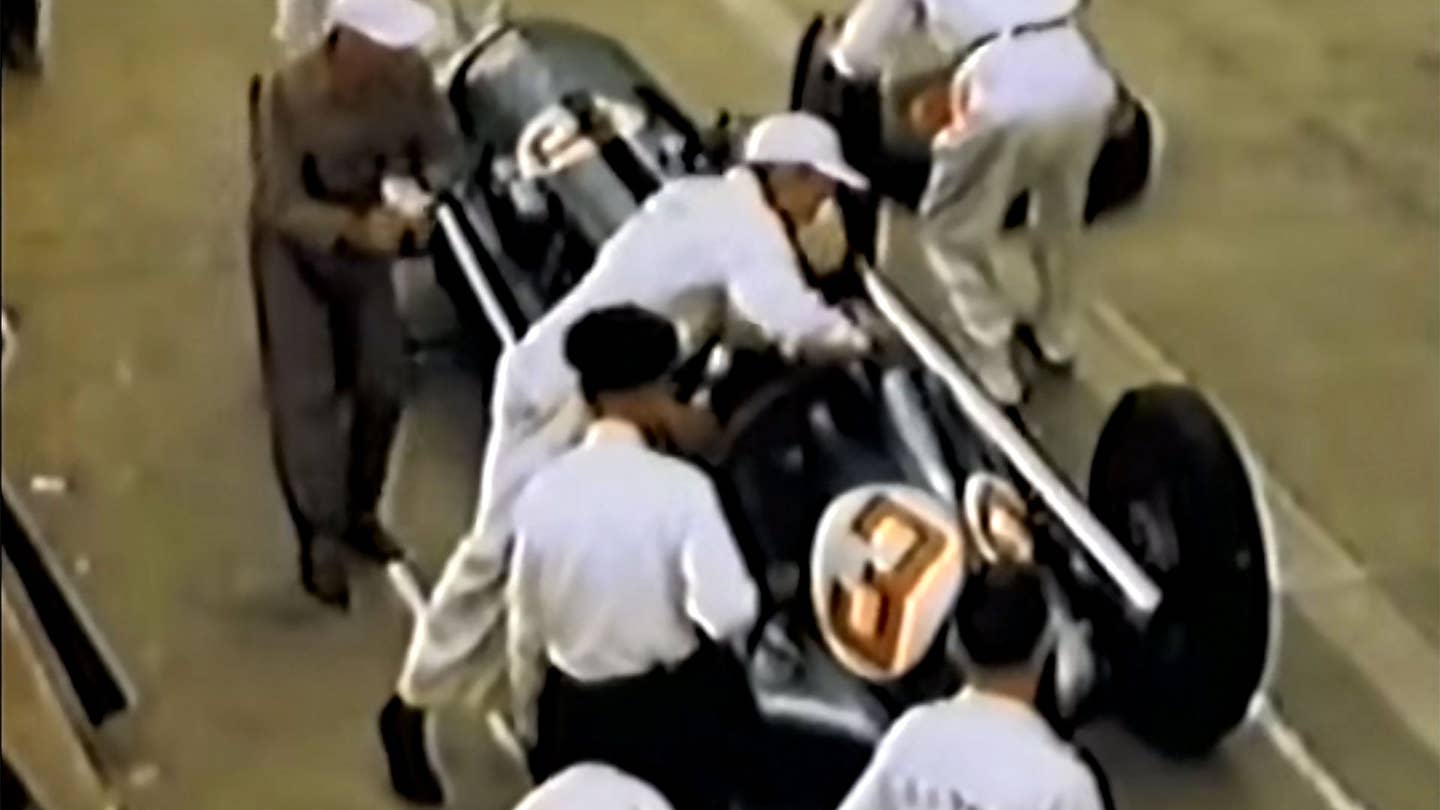Pit Stops, 1950 vs. Now
It took a lot longer back then, but hey, they got to use mallets.

Sixty-seven seconds.
That’s not the sum total of all his pit stops for the whole race. That’s the length of time of a single pit stop. Which is roughly 16 times longer than a modern-day Formula 1 pit stop.
Granted, as you can see in the video below, the racing crews of Indianapolis in 1950 were operating at some severe disadvantages, compared with modern-day F1 teams. They were limited to four people working on the car at a time—and that included the driver. These days, pit crews have pneumatic tools for swapping tires; in the 1950s, they had mallets to whack the knock-offs from the axle. Modern-day drivers have sleek, full-face helmets; Holland wore an open-face lid, which explains why that crew member is wiping down the small windshield with the zeal of a homeless man who’s doing it for you at a red light.
But even accounting for that, the difference in speed is astounding. Would it have killed Holland’s crew to break a sweat? He lost the rain-shortened race by only 38 seconds; if his pit crew had hustled at every pit stop, who knows, he might have won instead of finishing 2nd.
Then again, maybe I’m not giving Holland’s guys enough credit. Refueling, for the record, is not allowed in today’s F1. And today’s pit crews don’t have to deal with stinky gas fumes blasting out of unconstrained fuel tanks. Nor do modern Indy and Grand Prix drivers have to suffer through the volcanic heat of an Offenhauser engine mounted in front of them. Lastly, we suspect today’s drivers never have to deal with the distraction of a man in a black policeman’s hat, looming over the whole pit stop while brandishing a fire extinguisher.
Watch the video again. You’ll see him.


